Complimentary worldwide shipping on orders over $400 · No import tariffs for most countries
Complimentary worldwide shipping on orders over $400 · No import tariffs for most countries
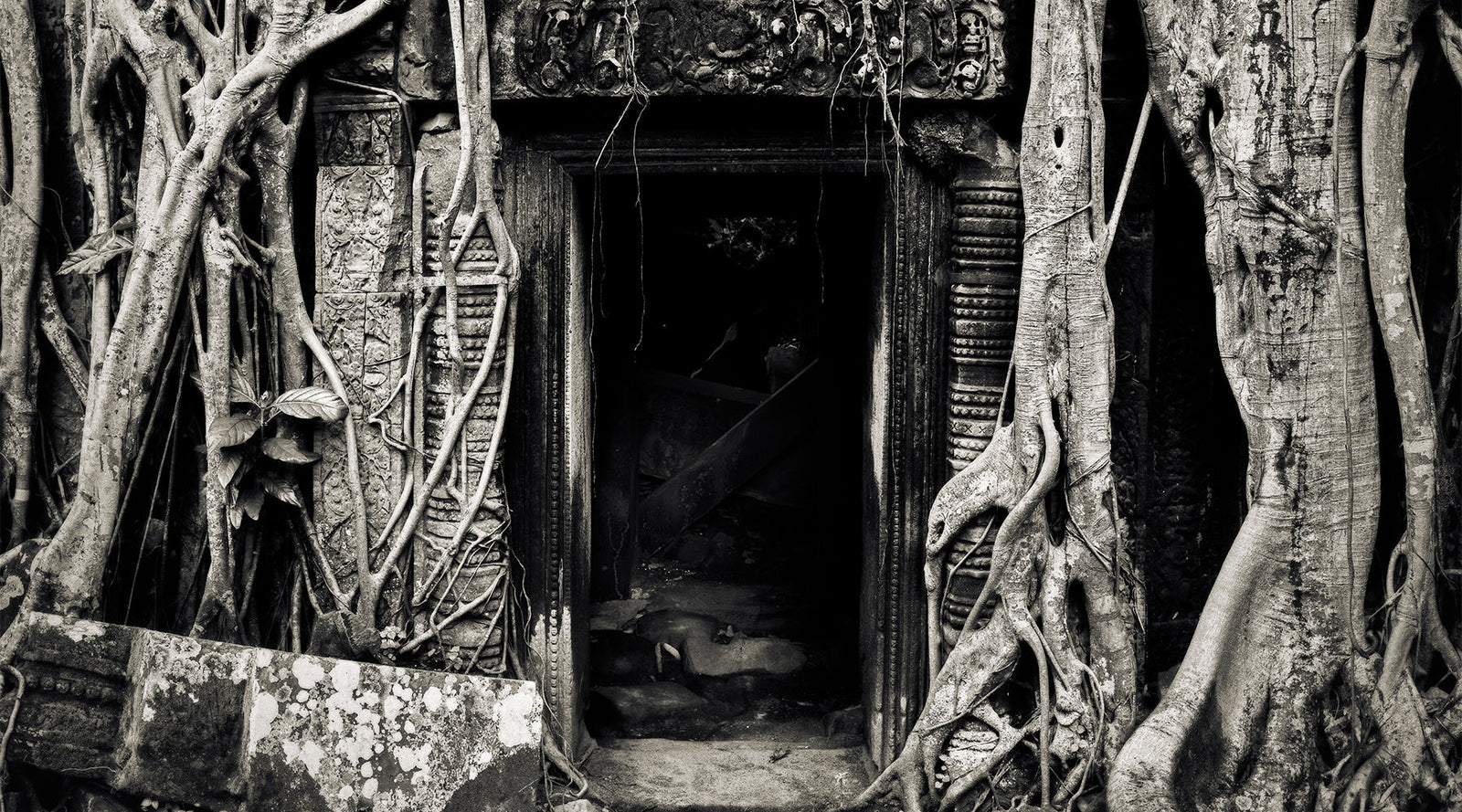
Before the Shutter, a Breath
1 min read
A single leaf moved, then stilled. The wind, like the breath of someone dreaming, passed gently through and was gone. Rain clung to the fig’s bark in thin silver strands. The threshold held its posture—open, but not offering.
The scene had completed itself. All that remained was to listen. To lower the camera like an offering. To place one’s silence against another silence and wait.
The shutter opened. Light gathered without urgency, as if drawn by scent rather than speed.
The roots remember more than the wall—
sky translated into sap,
stone softened by chant,
names the Kala continues to chew.Within their narrow veins,
silence travels—
a slow, deliberate river
seeking the temple’s unlit heart.And I,
a brief glint of stillness,
carry back one breath
before it returns
to hush.
Also in Library
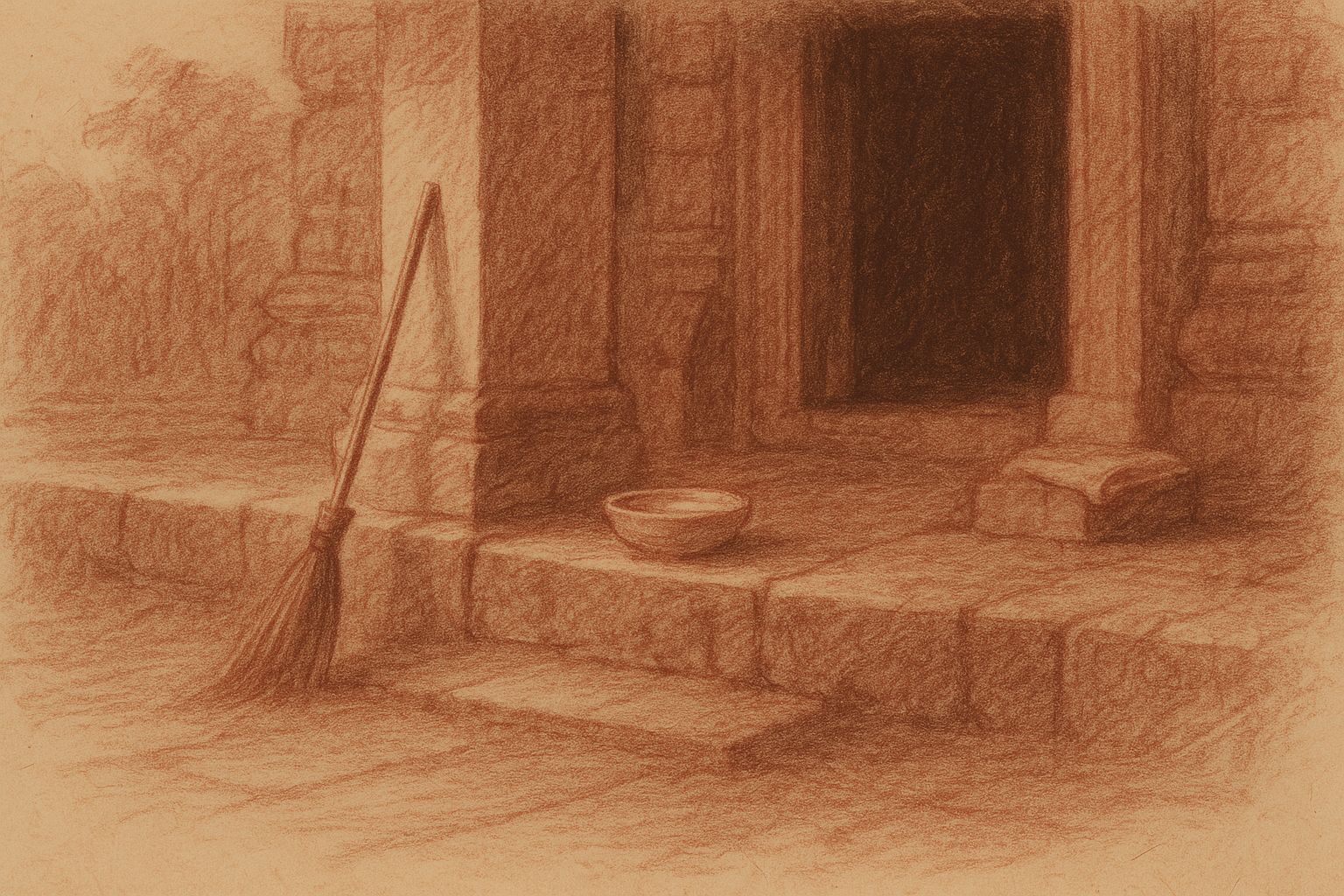
Those Who Keep the Way Open — On the Quiet Guardians of Angkor’s Thresholds
3 min read
Quiet gestures shape the way into Angkor — a swept stone, a refilled bowl, a hand steadying a guardian lion. This essay reflects on the unseen custodians whose daily care keeps the thresholds open, revealing how sacredness endures not through stone alone, but through those who tend its meaning.
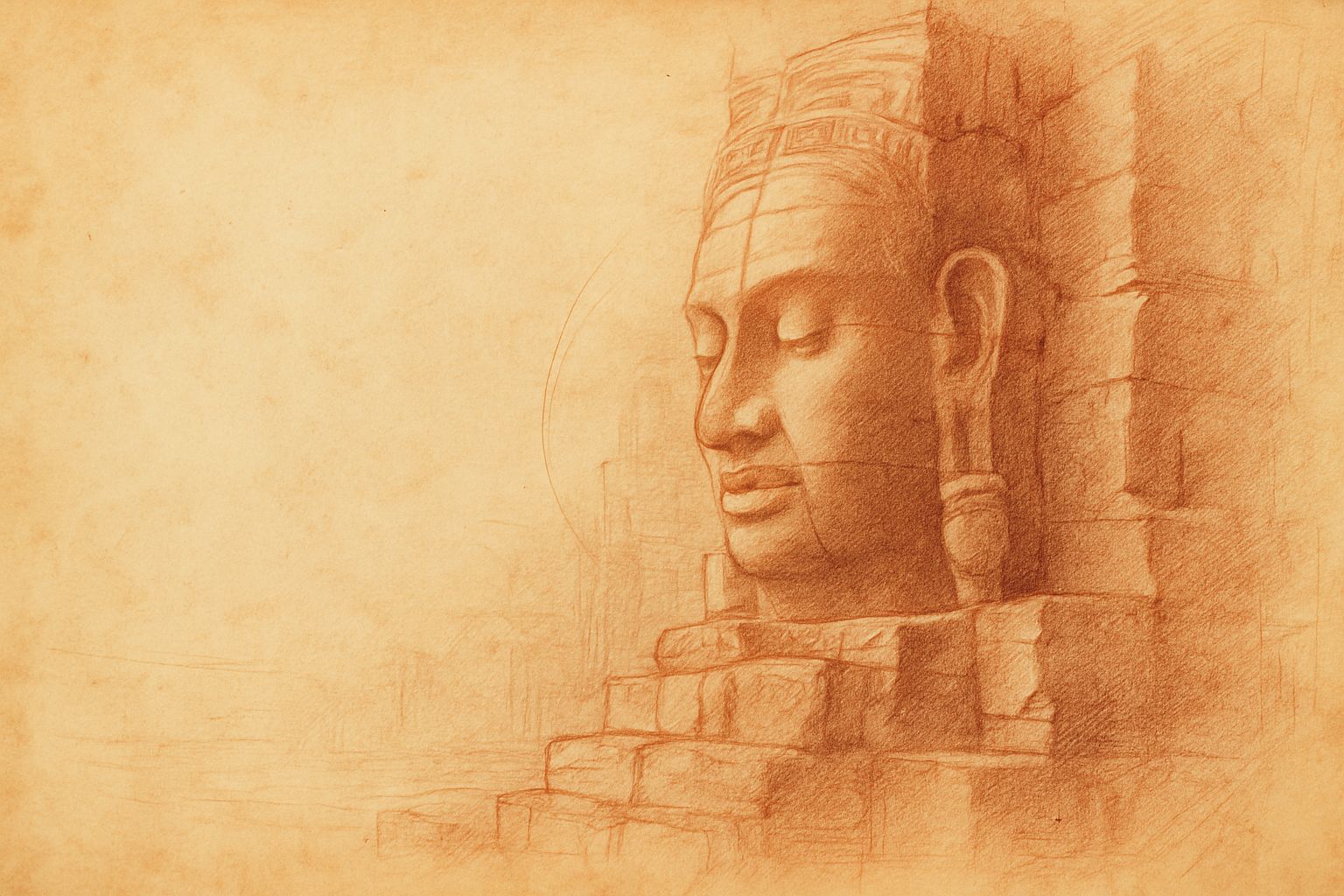
Multiplicity and Mercy — The Face Towers of Jayavarman VII
5 min read
A new vision of kingship rises at the Bayon: serene faces turned to every horizon, shaping a world where authority is expressed as care. Moving through the terraces, one enters a field of steady, compassionate presence — a landscape where stone, light, and time teach through quiet attention.
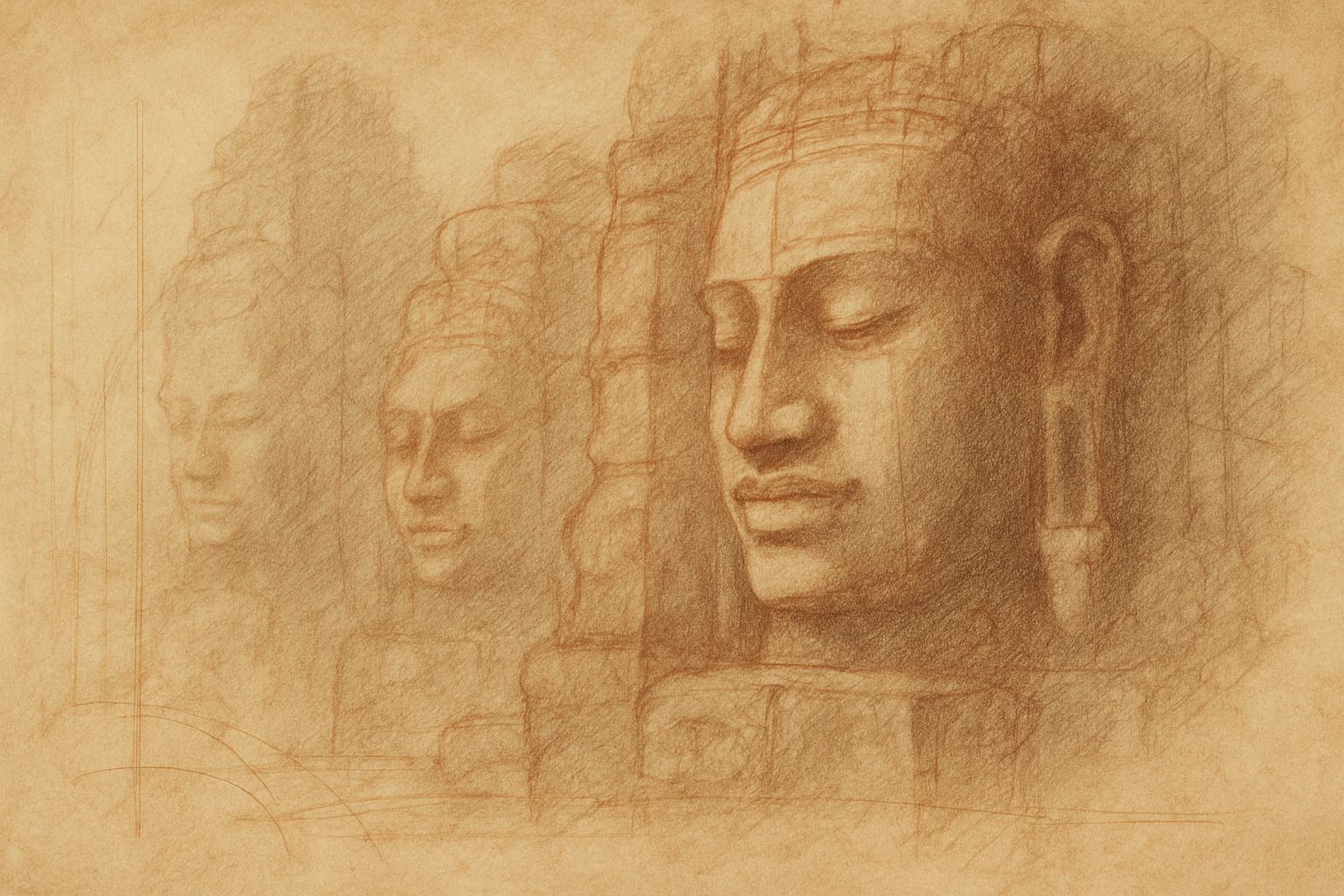
Stone That Dreams
4 min read
Bayon wakes like a mind emerging from shadow. Its many faces shift with light and breath, teaching that perception—and the self—is never singular. In walking this forest of towers, the pilgrim discovers a quiet multiplicity within, held together by a calm that feels both ancient and newly understood.
Ta Prohm, Angkor, Cambodia — 2020
Limited Edition Archival Pigment Print
Edition
Strictly limited to 25 prints + 2 Artist’s Proofs
Medium
Hand-toned black-and-white archival pigment print on Hahnemühle Bamboo — a museum-grade fine art paper chosen for its quiet tactility and reverent depth, echoing the spirit of the temples.
Signature & Numbering
Each print is individually signed and numbered by the artist on the border (recto)
Certificate of Authenticity
Accompanies every print
Image Size
8 x 8 inches (20.3 x 20.3 cm)
There are doorways that do not open into rooms, but into listening.
At Ta Prohm, before the jungle stirred, I stood before one such portal. Two trees—one strangling, one yielding—had braided themselves into the stone, their roots clinging like hands to a forgotten threshold. Above, the Kala’s mouth devoured time. Below, silence pressed against the dark.
The photograph was made slowly, as breath returned to the forest after rain. I worked with a large-format analogue camera, allowing the long exposure to gather what little light there was. In the studio, I shaped each silver tone by hand, using classical chiaroscuro to echo not just the scene, but the hush I felt inside it.
The final print is an 8 × 8-inch archival pigment print on museum-grade Hahnemühle Bamboo paper. The edition is strictly limited to 25, with 2 Artist’s Proofs. Each piece is hand-toned, signed, and numbered on border recto, and includes a certificate of authenticity.
Let this image become a threshold of stillness in your space.
Click here to step through the breath of the image into the Artist’s Journal.
Previously titled ‘Strangled Doorway, Ta Prohm Temple, Angkor, Cambodia. 2020,’ this photograph has been renamed to better reflect its place in the series and its spiritual tone. The edition, provenance, and authenticity remain unchanged.
Join My Studio Journal
Receive occasional letters from my studio in Siem Reap—offering a glimpse into my creative process, early access to new fine art prints, field notes from the temples of Angkor, exhibition announcements, and reflections on beauty, impermanence, and the spirit of place.
No noise. No clutter. Just quiet inspiration, delivered gently.
Subscribe and stay connected to the unfolding story.
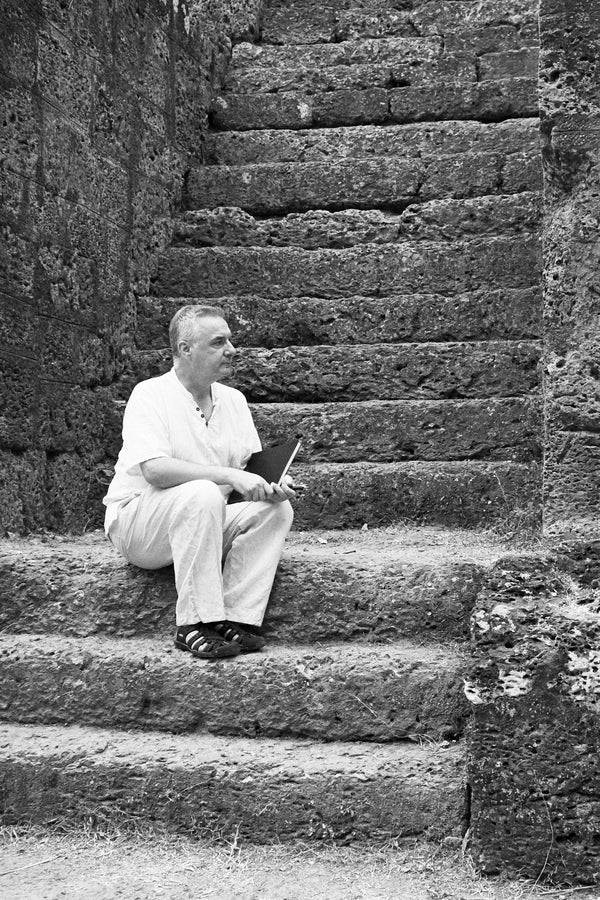
Join My Studio Journal
Receive occasional letters from my studio in Siem Reap—offering a glimpse into my creative process, early access to new fine art prints, field notes from the temples of Angkor, exhibition announcements, and reflections on beauty, impermanence, and the spirit of place.
No noise. No clutter. Just quiet inspiration, delivered gently.
Subscribe and stay connected to the unfolding story.

